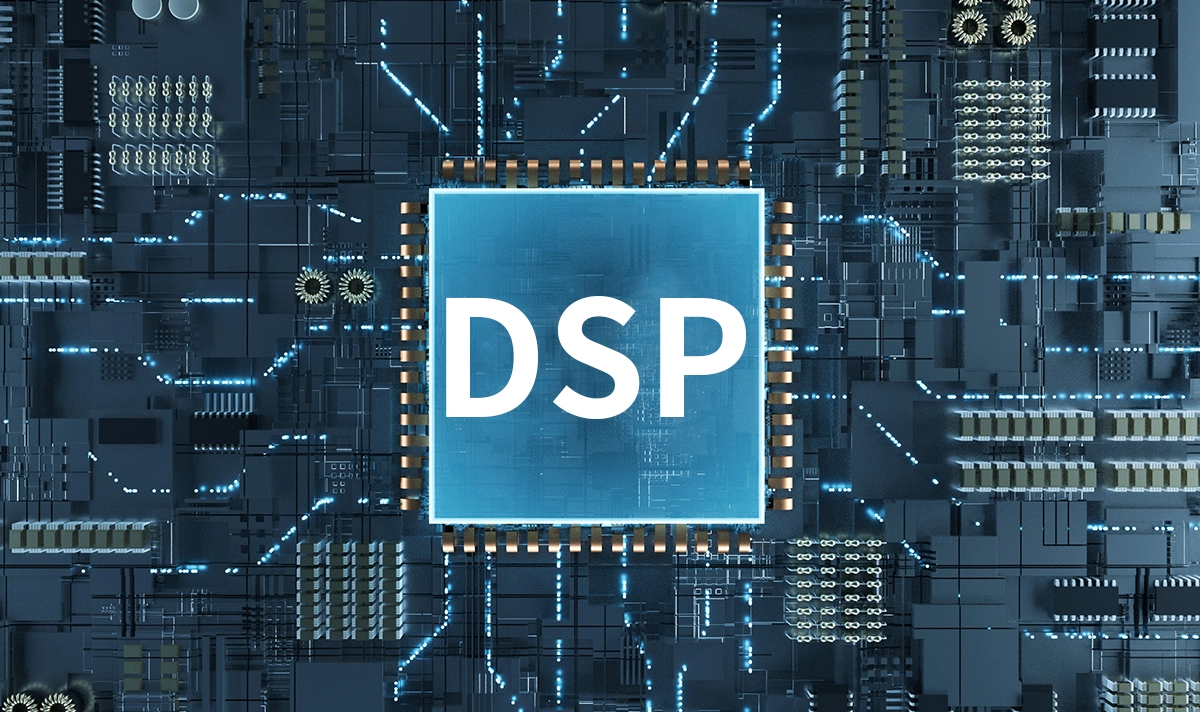
In the relentless pursuit of higher bandwidth and longer reach, optical transceivers have evolved from relatively simple components into sophisticated signal processing powerhouses. At the very core of this transformation lies the Digital Signal Processor (DSP). For engineers, network architects, and procurement specialists navigating the complexities of modern optical networking, understanding the DSP's function is paramount to selecting the right high-speed optical transceiver solutions.
➽ Beyond the Light: What Does a DSP Actually Do?
An optical transceiver's fundamental job is converting electrical signals to optical signals (transmit) and vice versa (receive). However, as data rates soar beyond 100G, 400G, and now 800G, simply converting signals isn't enough. Signals traveling over fiber are degraded by numerous impairments:
Chromatic Dispersion (CD): Different light wavelengths travel at slightly different speeds, causing signal pulses to spread and overlap.
Polarization Mode Dispersion (PMD): Imperfections in the fiber cause different polarization states of light to travel at different speeds.
Non-Linear Effects: High optical power levels induce complex interactions within the fiber itself, distorting the signal.
Amplified Spontaneous Emission (ASE) Noise: Noise introduced by optical amplifiers (like EDFA) along the link.
Signal Attenuation: Gradual weakening of the optical signal over distance.

A high-performance DSP for optical modules acts as the brain and corrective engine. Its primary functions include:
Advanced Modulation: Generating complex modulation formats (e.g., DP-16QAM, DP-64QAM) that pack more data bits onto each symbol, enabling higher data rates within the same bandwidth.
Digital Compensation: Actively compensating for CD, PMD, and non-linear impairments digitally within the transceiver, significantly extending reach without bulky external compensators.
Forward Error Correction (FEC): Implementing powerful FEC algorithms (e.g., oFEC, CFEC) that add redundant bits, allowing the receiver to detect and correct errors caused by noise, vastly improving link reliability and tolerance to lower Optical Signal-to-Noise Ratio (OSNR).
Linearization: Correcting distortions inherent in the laser driver and modulator components.
Clock Recovery & Synchronization: Precisely recovering the timing signal from the received data stream.
Performance Monitoring: Providing real-time diagnostics on signal quality (e.g., pre-FEC Bit Error Rate), optical power, temperature, and voltage, enabling intelligent network management.
➽ The Evolution: DSPs Driving Optical Transceiver Generations
DSP Capability Evolution in Optical Transceivers
Era | DSP Role & Impact |
10G & Early 40G | Minimal or No DSP. Relied on simpler modulation (NRZ) and limited reach. |
100G Coherent (CFP/CFP2) | Sophisticated DSPs enabled coherent detection (DP-QPSK), revolutionizing long-haul. |
400G/800G Coherent (QSFP-DD, OSFP) | Highly integrated, power-efficient DSPs enable coherent technology in pluggable form factors for DCI and Metro. Support higher-order modulation (16QAM, 64QAM). |
Future (1.6T+) | Focus on extreme integration, lower power per bit (nJ/bit), advanced algorithms (probabilistic shaping), and co-packaged optics support. |
➽ Why DSP Choice Matters for Your Network Performance
Selecting an optical transceiver with a powerful and efficient DSP directly impacts:
Reach: Can your 400G link achieve 2km, 10km, 40km, 80km, or 120km? The DSP's compensation power is key.
Power Consumption: DSPs are significant power consumers. Power-efficient DSP design is critical for high-density deployments and reducing operating expenses (OPEX). Better DSPs achieve more performance per watt.
Latency: While DSP processing adds some latency, modern low-latency DSP solutions are optimized for financial trading and compute-interconnect applications.
Reliability & Margin: Robust FEC and compensation provide crucial link margin, ensuring stability under varying conditions and over component lifetime.
Total Cost of Ownership (TCO): A transceiver with a superior DSP might have a higher initial cost but can save costs by eliminating external compensators, enabling longer spans (fewer repeaters), and reducing power/cooling needs.
➽ LINK-PP: Delivering Advanced DSP Integration

At LINK-PP, we recognize the DSP as the cornerstone of next-generation optical transceiver performance. Our engineering focus is on integrating best-in-class coherent DSP technology into our comprehensive portfolio. We collaborate closely with leading DSP suppliers to ensure our modules deliver optimal signal integrity, maximum reach, and minimal power consumption.
Our LINK-PP QSFP-DD 400G LR4 optical transceiver, for example, leverages a state-of-the-art 7nm DSP. This enables:
Transmission of 400Gbps up to 10km using DP-16QAM modulation.
Integrated compensation for CD (> 50,000 ps/nm) and PMD.
High-gain oFEC for exceptional error correction.
Comprehensive real-time performance monitoring.
Industry-leading power efficiency for high-density deployments.
For demanding data center interconnect (DCI) applications requiring high-bandwidth, low-power pluggable optics, the LINK-PP OSFP 800G Module utilizes an advanced 5nm DSP core supporting DP-64QAM, pushing the boundaries of capacity and reach within the stringent power budgets of modern data centers.
➽ The Future is Shaped by DSP Innovation
The trajectory of optical networking is intrinsically linked to DSP advancement. Key trends include:
Higher Order Modulation & Probabilistic Shaping: Squeezing even more capacity out of available spectrum.
Co-Packaged Optics (CPO): Moving the DSP closer to the switch ASIC, requiring radical DSP architectural changes for extreme integration and power reduction.
Artificial Intelligence (AI): Using AI/ML within DSPs for even more adaptive and efficient impairment compensation.
Flexible Data Rates: DSPs enabling software-selectable data rates (e.g., 400G, 200G, 100G) on a single module for maximum deployment flexibility.
Continued Power Reduction: Achieving lower nJ/bit through process node shrinks (3nm and beyond) and architectural innovations.
➽ Conclusion: The Indispensable Engine
The Digital Signal Processor is no longer just a component; it's the indispensable engine driving the capabilities of modern high-speed optical transceiver solutions. Its ability to mitigate impairments, implement complex modulation, and ensure data integrity through powerful FEC is what makes 400G, 800G, and future terabit speeds possible over practical distances. Understanding the DSP's role and capabilities is crucial when evaluating optical transceiver performance and making informed decisions for your network infrastructure.
Optimize your network with LINK-PP's high-performance optical transceivers. Explore our range of 400G and 800G solutions featuring cutting-edge DSPs designed for maximum reach, efficiency, and reliability. Contact our technical sales team today for a consultation and discover the ideal LINK-PP optical module for your specific application requirements.
➽ FAQ
What does a DSP do in an optical transceiver?
A DSP changes signals between analog and digital forms. It helps send data faster and farther. The DSP also fixes problems in the signal and keeps the data clear.
What problems can a DSP fix in optical fiber?
A DSP can fix chromatic dispersion, noise, and nonlinear effects. It also corrects errors and keeps the signal strong. This helps the data travel long distances without losing quality.
What types of modulation does a DSP support?
A DSP supports advanced modulation formats like QAM and PAM4. These formats let the transceiver send more data in each signal. The DSP makes sure the modulation works well.
What is forward error correction (FEC) in a DSP?
Forward error correction adds extra bits to the data. The DSP uses these bits to find and fix mistakes. This keeps the data accurate and safe during transmission.
What makes a DSP important for power and size?
Feature | Why It Matters |
|---|---|
Power Saving | Uses less energy |
Small Size | Fits in compact modules |
A DSP helps make optical transceivers smaller and more efficient.
➽ See Also
The Importance Of Digital Diagnostics Monitoring In Transceivers
Exploring Wavelength Division Multiplexing And Its Network Uses


